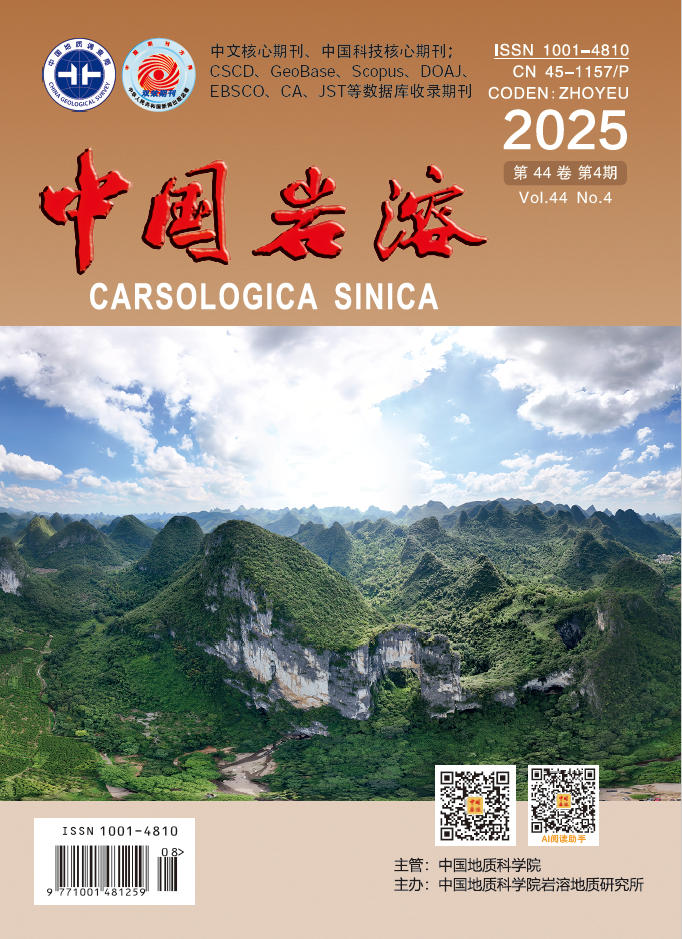2014, 33(4): 396-404.
doi: 10.11932/karst20140402
Abstract:
The Guizhou plateau is in the eastern part of the Yunnan-Guizhou plateau, where variable karst landscapes are widely distributed. A typical dolomite weathering profile from a karst area with a subtropical humid monsoon environment was selected for study of the behavior of major and trace elements in northern Guizhou province, China. The transport function and factors affecting fourteen major and trace elements were analyzed. The elemental Fe, Mg, Ca, Na, Ti, K, Mn, Li, Cr, Co, Ba, V, Pb, and Zn content of 25 strata were determined. A mass transport calculation is presented which was employed as a method to determine the mobility of those elements during each stage in a progressive geochemical process and then used to calculate the gain or loss of each element during the whole process.It is possible to provide a systematic basis for the geochemical characters of elements in the red weathering crust. In order to achieve these goals, efficient approaches were employed, including field investigation, laboratory testing and data analysis. It was determined that, (1) Relative to the other elements, the average contents of Fe, K, Mn and Co, Pb, Zn are, in general, similar to UCC values during weathering.In contrast, values for Mg, Ca, Na, Ti and Li, Cr, Ba, V deviate greatly from UCC, with some abnormal values (XPS-4 to XPS-25). (2) Ti-Fe, Ti-Ba and Ti-V indicate the same increasing chemical weathering trend. Conversely, Ti-Mg has a negative trend during the whole weathering of dolomite. (3) Taking Ti as the reference and compairing element for calculation, mass-balance equations were applied to geochemical analyses to show that most of the elements had migrated and leached, while Fe, Cr and V were enriched during the chemical weathering process. Likewise, elements such as K and Ba had migrated and leached, but were slightly enriched in some layers of the weathering profile. Na and Co were enriched in the weathering protolith. This enrichment may have been caused by both the biogeochemical process and changes in pH and sectional structure, as well as the adsorption of elements by clay minerals and organic materials during chemical weathering.






